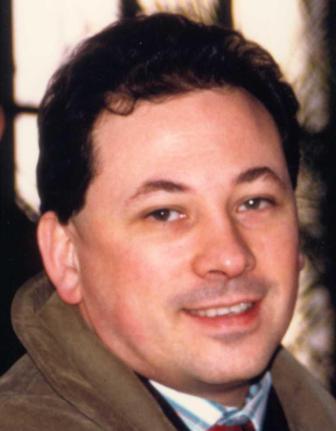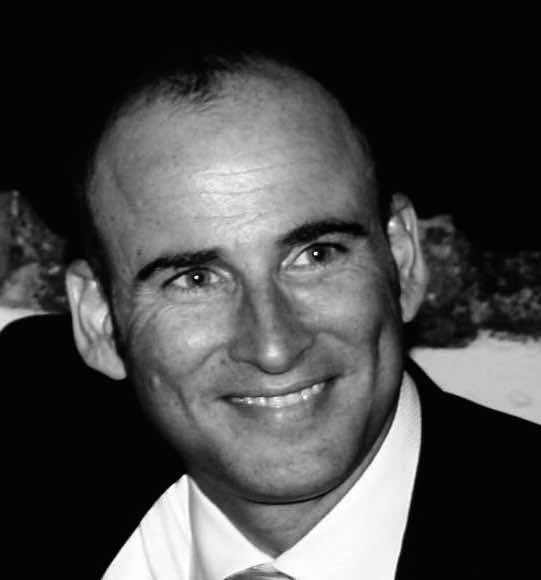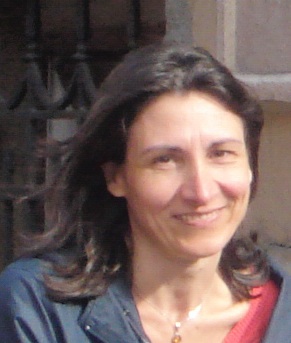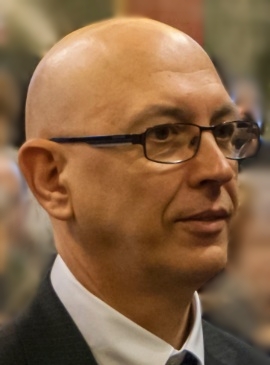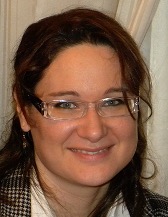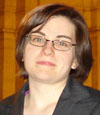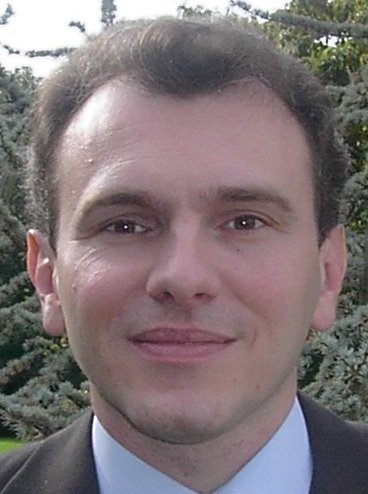Studying at the University of Verona
Here you can find information on the organisational aspects of the Programme, lecture timetables, learning activities and useful contact details for your time at the University, from enrolment to graduation.
Academic calendar
The academic calendar shows the deadlines and scheduled events that are relevant to students, teaching and technical-administrative staff of the University. Public holidays and University closures are also indicated. The academic year normally begins on 1 October each year and ends on 30 September of the following year.
Course calendar
The Academic Calendar sets out the degree programme lecture and exam timetables, as well as the relevant university closure dates..
| Period | From | To |
|---|---|---|
| I semestre | Oct 3, 2011 | Jan 31, 2012 |
| II semestre | Mar 1, 2012 | Jun 15, 2012 |
| Session | From | To |
|---|---|---|
| Sessione straordinaria | Feb 1, 2012 | Feb 29, 2012 |
| Sessione estiva | Jun 18, 2012 | Jul 31, 2012 |
| Sessione autunnale | Sep 3, 2012 | Sep 28, 2012 |
| Session | From | To |
|---|---|---|
| Sessione autunnale | Oct 19, 2011 | Oct 19, 2011 |
| Sessione straordinaria | Dec 13, 2011 | Dec 13, 2011 |
| Sessione invernale | Mar 21, 2012 | Mar 21, 2012 |
| Sessione estiva | Jul 16, 2012 | Jul 16, 2012 |
| Period | From | To |
|---|---|---|
| Festa di Ognissanti | Nov 1, 2011 | Nov 1, 2011 |
| Festa dell'Immacolata Concezione | Dec 8, 2011 | Dec 8, 2011 |
| Vacanze Natalizie | Dec 22, 2011 | Jan 6, 2012 |
| Vacanze Pasquali | Apr 5, 2012 | Apr 10, 2012 |
| Festa della Liberazione | Apr 25, 2012 | Apr 25, 2012 |
| Festa del Lavoro | May 1, 2012 | May 1, 2012 |
| Festa del Patrono di Verona S. Zeno | May 21, 2012 | May 21, 2012 |
| Festa della Repubblica | Jun 2, 2012 | Jun 2, 2012 |
| Vacanze estive | Aug 8, 2012 | Aug 15, 2012 |
Exam calendar
Exam dates and rounds are managed by the relevant Science and Engineering Teaching and Student Services Unit.
To view all the exam sessions available, please use the Exam dashboard on ESSE3.
If you forgot your login details or have problems logging in, please contact the relevant IT HelpDesk, or check the login details recovery web page.
Should you have any doubts or questions, please check the Enrollment FAQs
Academic staff
Bertelle Roberto
 federica.briata@univr.it
federica.briata@univr.it
Guarnieri Valerio
 valerio.guarnieri@univr.it
valerio.guarnieri@univr.it
 +39 045 802 7085
+39 045 802 7085
 massimo.guerriero@univr.it
massimo.guerriero@univr.it
 luca.vigano@univr.it
luca.vigano@univr.it
Study Plan
The Study Plan includes all modules, teaching and learning activities that each student will need to undertake during their time at the University.
Please select your Study Plan based on your enrollment year.
1° Year
| Modules | Credits | TAF | SSD |
|---|
2° Year activated in the A.Y. 2012/2013
| Modules | Credits | TAF | SSD |
|---|
3° Year activated in the A.Y. 2013/2014
| Modules | Credits | TAF | SSD |
|---|
Un insegnamento a scelta tra i seguenti:| Modules | Credits | TAF | SSD |
|---|
| Modules | Credits | TAF | SSD |
|---|
| Modules | Credits | TAF | SSD |
|---|
Un insegnamento a scelta tra i seguenti:Legend | Type of training activity (TTA)
TAF (Type of Educational Activity) All courses and activities are classified into different types of educational activities, indicated by a letter.
Operating Systems (2012/2013)
Teaching code
4S00019
Credits
12
Language
Italian
Scientific Disciplinary Sector (SSD)
ING-INF/05 - INFORMATION PROCESSING SYSTEMS
The teaching is organized as follows:
Teoria
Laboratorio [Laboratorio 1]
Laboratorio [Laboratorio 2]
Credits
4
Period
II semestre
Academic staff
Valerio Guarnieri
Learning outcomes
The course introduces to operating system design, with particular regards to concepts related to the architecture of an operating system, and to the management and synchronization of processes and resources.
Program
Theory:
-------
* Introduction: Evolution and role of the operating system. Architectural concepts. Organization and functionality of an operating system.
* Process Management: Processes. Process status. Context switch. Process creation and termination. Thread. User-level threads and kernel-level threads. Process cooperation and communication: shared memory, messagges. Direct and indirect communication.
* Scheduling: CPU and I/O burst model. Long term, short term and medium term scheduling. Preemption. Scheduling criteria. Scheduling algorithm: FCFS, SJF, priority-based, RR, HRRN, multiple queues with and without feedback. Algorithm evaluation: deterministic and probabilistic models, simulation.
* Process synchronization: data coherency, atomic operations. Critical sections. SW approaches for mutual exclusion: Peterson and Dekker's algorithms, baker's algorithm. HW for mutual exclusion: test and set, swap. Synchronization constructs: semaphores, mutex, monitor.
* Deadlock: Deadlock conditions. Resource allocation graph. Deadlock prevention. Deadlock avoidance. Banker's algorithm. Deadlock detection e recovery.
* Memory management: Main memory. Logical and physical addressing. Relocation, address binding. Swapping. Memory allocation. Internal and external fragmentation. Paging. HW for paging: TLB. Page table. Multi-level paging. Segmentation. Segment table. Segmentation with paging.
* Virtual memory: Paging on demand. Page fault management. Page substitution algorithms: FIFO, optimal, LRU, LRU approximations. Page buffering. Frame allocation: local and global allocation. Thrashing. Working set model. Page fault frequency.
* Secondary memory. Logical and physical structure of disks. Latency time. Disk scheduling algorithms: FCFS, SSTF, SCAN, C-SCAN, LOOK, C-LOOK. RAID.
* I/O subsystem: I/O Hardware. I/O techniques: programmed I/O, interrupt, DMA. Device driver and application interface. I/O kernel services: scheduling, buffering, caching, spooling.
*File System: file, attributes and related operation. File types. Sequential and direct access. Directory structure. Access permissions and modes. Consistency semantics. File system structure. File system mounting. Allocation techniques: adjacent, linked, indexed. Free space management: bit vector, lists. Directory implementation: linear list, hash table.
Laboratory:
------------
* Shell programming in Unix/Linux.
* Introduction to the system programming in Unix/Linux.
* System calls for I/O.
* System calls for process management.
* System calls and techniques for inter-process communication and synchronization (pipe, fifo, message queue, share memory, semaphores, ...).
* Thread programming.
Bibliography
| Activity | Author | Title | Publishing house | Year | ISBN | Notes |
|---|---|---|---|---|---|---|
| Teoria | Dhananjay M. Dhamdhere | Sistemi Operativi (Edizione 1) | McGraw-Hill | 2010 | 9788838664878 | Meno intuitivo dello Silberschatz, ma generalmente presenta i concetti in modo più approfondito. |
| Teoria | A. Silberschatz - P.B. Galvin - G. Gagne | Sistemi Operativi. Concetti ed esempi. (Edizione 8) | Pearson Paravia Bruno Mondadori | 2009 | 978-88-7192-569-1 | Libro semplice da leggere, a volte i concetti non sono approfonditi. |
Examination Methods
Theory:
-------
The final exam consists of a written test containing questions and exercises.
Laboratory:
-----------
The exam can be taken in two modes: oral or written.
Oral mode:
During the course, students must solve 4 homeworks and provide the corresponding solutions within deadlines defined by the theacher. Then, at the end of the course, on the second half of June, each student must present orally the provided solutions to the theacher.
The exam can be taken in oral mode only on the second half of June.
The observance of deadlines is mandatory. Students that miss the deadline cannot take the exam in the oral mode.
Written mode:
The exam consists of solving some exercises related to system programming by means of shell scripts and/or C programs.
Total grade
-----------
The total grade (thery+laboratory) is given by:
theory_grade*0.5 + laboratory_grade*0.5.
Teaching materials e documents
-

 Calendario lezioni I semestre (modificato il 28/12/12)
(it, 41 KB, 28/12/12)
Calendario lezioni I semestre (modificato il 28/12/12)
(it, 41 KB, 28/12/12)
-

 Date degli esami
(it, 28 KB, 22/11/13)
Date degli esami
(it, 28 KB, 22/11/13)
-

 Slide delle lezioni di teoria
(it, 9984 KB, 19/09/12)
Slide delle lezioni di teoria
(it, 9984 KB, 19/09/12)
-

 Calendario laboratorio
(it, 74 KB, 03/04/13)
Calendario laboratorio
(it, 74 KB, 03/04/13)
-
 Materiale di laboratorio
(it, 39 KB, 28/02/13)
Materiale di laboratorio
(it, 39 KB, 28/02/13)
Type D and Type F activities
Modules not yet included
Career prospects
Module/Programme news
News for students
There you will find information, resources and services useful during your time at the University (Student’s exam record, your study plan on ESSE3, Distance Learning courses, university email account, office forms, administrative procedures, etc.). You can log into MyUnivr with your GIA login details: only in this way will you be able to receive notification of all the notices from your teachers and your secretariat via email and soon also via the Univr app.
Graduation
List of theses and work experience proposals
| theses proposals | Research area |
|---|---|
| Analisi e percezione dei segnali biometrici per l'interazione con robot | AI, Robotics & Automatic Control - AI, Robotics & Automatic Control |
| Integrazione del simulatore del robot Nao con Oculus Rift | AI, Robotics & Automatic Control - AI, Robotics & Automatic Control |
| Domain Adaptation | Computer Science and Informatics: Informatics and information systems, computer science, scientific computing, intelligent systems - Computer graphics, computer vision, multi media, computer games |
| Domain Adaptation | Computer Science and Informatics: Informatics and information systems, computer science, scientific computing, intelligent systems - Machine learning, statistical data processing and applications using signal processing (e.g. speech, image, video) |
| BS or MS theses in automated reasoning | Computing Methodologies - ARTIFICIAL INTELLIGENCE |
| Domain Adaptation | Computing Methodologies - IMAGE PROCESSING AND COMPUTER VISION |
| Domain Adaptation | Computing methodologies - Machine learning |
| Dati geografici | Information Systems - INFORMATION SYSTEMS APPLICATIONS |
| Analisi e percezione dei segnali biometrici per l'interazione con robot | Robotics - Robotics |
| Integrazione del simulatore del robot Nao con Oculus Rift | Robotics - Robotics |
| BS or MS theses in automated reasoning | Theory of computation - Logic |
| BS or MS theses in automated reasoning | Theory of computation - Semantics and reasoning |
| Proposte di tesi/collaborazione/stage in Intelligenza Artificiale Applicata | Various topics |
| Proposte di Tesi/Stage/Progetto nell'ambito dell'analisi dei dati | Various topics |
Attendance
As stated in the Teaching Regulations for the A.Y. 2022/2023, attendance at the course of study is not mandatory.
